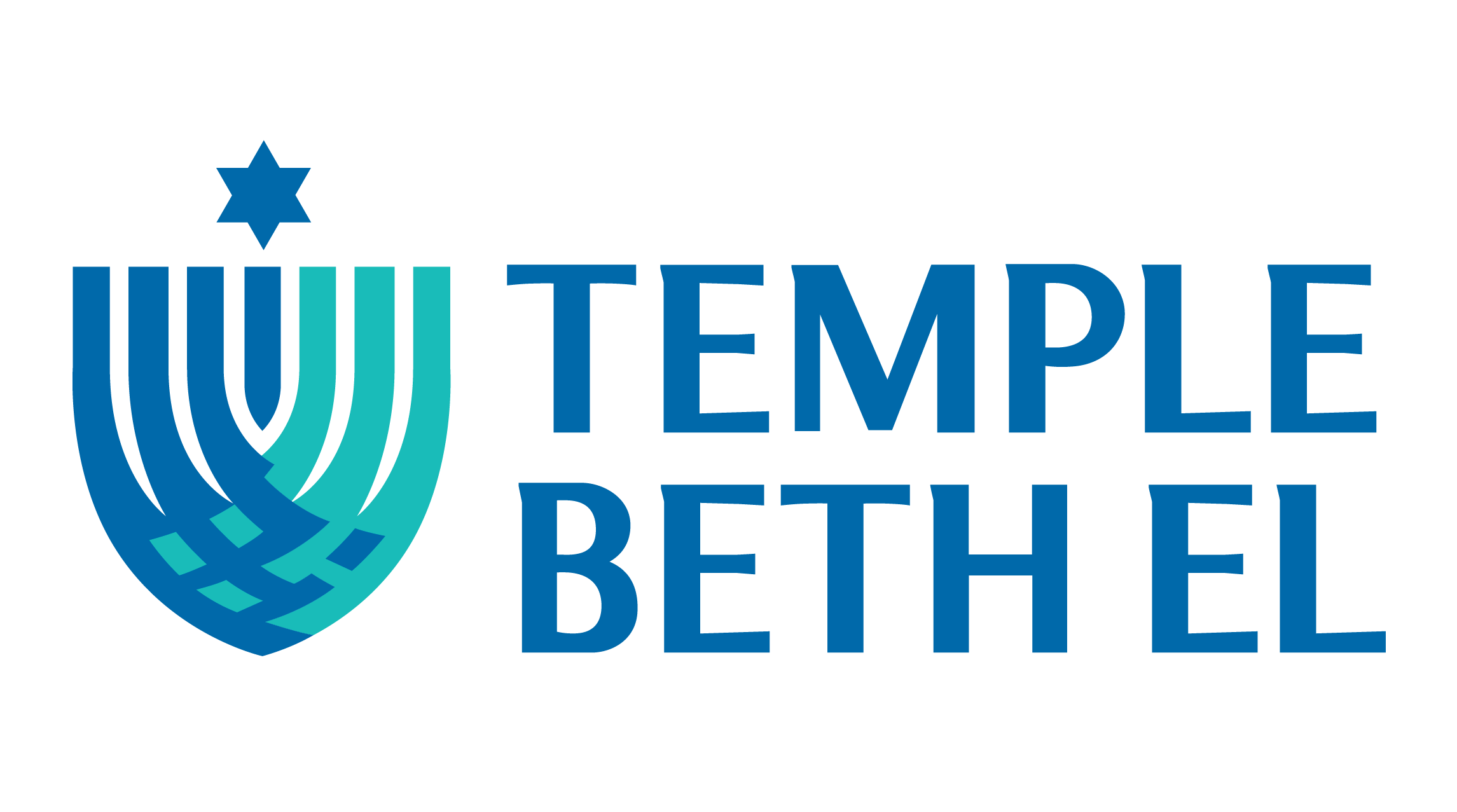Rosh haShana 5778: On Race and ReHumanization by Rabbi Dusty Klass
Think back for a moment,
To a year ago.
A year ago,
I was still learning the full extent of southern hospitality.
A year ago,
I still began each drive by turning on my GPS.
A year ago,
I had only been uptown once or twice, mostly for lunch at Amelie’s.
What were you still learning last year? What were you focusing your time, your energy?
Where had you come from?
Where were you hoping to go?
What were you hoping to do?
Almost exactly a year ago, I found myself uptown at night for the first time; but I was not at Amelie’s.
My clergy colleagues[1] and I arrived at the corner of Trade and College
just as two rows of police were creating a line
to block the street.
The air was electric with tension
In a city familiar with police shootings of black and latino men
In a city clearly divided along lines of race and class
In a country still reverberating from injustice after injustice after injustice.
Together with other clergy,
we formed a line between the police
and the men and women that had gathered in protest
after the killing of Keith Scott.
In front of us,
the officers stood tall in full riot gear;
helmets, boots, shields, batons.
Per their orders, they avoided eye contact
and spoke to no one.
Behind us, protesters shouted, screamed:
“Black Lives Matter!”
“K(no)w Justice, K(no)w Peace!”
“When black bodies are under attack, Stand up. Fight back.”
And between the silent wall of police officers
and the anguished lament of protesters,
Charlotte’s clergy stood hand-in-hand,
linking our various faiths together,
acting as a human buffer.
Later that night, I laid in bed,
Numb and exhausted and unable to sleep.
Listening to helicopters overhead, I remember thinking:
“…I don’t know where any of this ends.
So much is broken.
The problem is so big
And I don’t even know how to begin fixing it.”
The people protesting the killing of Keith Scott are not the problem.
The people blocking the street are not the problem.
The problem lies in the need for a buffer between those two groups of people.
The problem lies in our collective inability
to see and recognize and honor the humanity in each other.
The problem is racism;
deep-seated centuries-old racism,
built on the thorough dehumanization
of black and brown people.
Here we are, 364 days later –
It’s a new year!
We have all learned new skills, and started projects.
Beloved friends and family have died,
and tiny new lives have entered the world.
We have changed jobs,
changed household roles,
changed houses.
We have, each of us, come a long way.
And we – each of us – have a long way to go.
In some ways, the Uprising changed Charlotte;
but in some ways, it hasn’t.
A year is a long time,
and this particular year has been quite the year.
And after the news shifts from one crisis to the next,
it is hard to continue to focus on last week’s stories,
much less last year’s.
Except the protests aren’t just last year’s story.
The protests are simply the latest chapter
in an age-old story,
a story that undercuts all of the other stories.
—
I went to a neighborhood school populated mostly by people of Vietnamese or African American descent,
and I was one of a handful of white kids in my elementary school.
Our school librarian Mrs. Kelby, saw both my fragility and my potential for resilience, and took me under her wing.
She knew I was Jewish, because my dad came into my class every year in December to read Herschel and the Hanukah Goblins and light the hanukiah.
One particularly hard day,
Mrs. Kelby looked me in the eye and said,
“your people and my people – we get each other.
We’ve been through the same things.”
Her words have reverberated in my mind for years.
As I stood hand-in-hand with clergy last September,
listening to the anger and lament and pain of the protestors, I wondered:
Have we really been through the same things?
Each year at Passover,
the Hagadah tells the history of our people.
With words from Deuteronomy, we remind ourselves: “Arami oved avi, vayered mimitzrayim…
my father was a wandering Aramean
and he went down into Egypt, and sojourned there, few in number;
and he became there a nation; great, mighty, and populous. And the Egyptians subjugated us and tormented us with hard bondage.[2]
In the midst of the Civil War, three escaped slaves wrote a song likening this biblical story of oppression to their own:
“When Israel was in Egypt’s land/
Let my people go/
Oppressed so hard they could not stand/
let my people go/
go down Moses/
way down to Egypt’s land/
tell old Pharaoh/
let my people go.”
This is the story of our people.[3]
It’s why so many Jews sing this song at our Passover seders!
For millennia we have re-told the Passover story.
We teach it to our children so that they may teach it to their children.
So that each and every generation,
we may remember our obligation to free those still enslaved.
This too is the story of black and brown people in America – Kind of.
We tell similar stories, but the stories are not actually the same.
Because the black American story of slavery
is barely 400 years old,
and it is far from over.
In the documentary 13th,
scholars explore the 13th amendment,
which abolished slavery and involuntary servitude,
except as punishment for a crime.
The film chronicles our criminal justice system’s perpetration of a legal sort of slavery.
By targeting people of color for crimes,
and branding all people of color as prone to commit crime, we have created a system
that disproportionately incarcerates people of color.
Popular propaganda in the early 1900’s,
most famously “The Birth of a Nation,”
portrayed black people as inherently dangerous criminals, and from the 1850’s far into the 1950’s,
law enforcement arrested and jailed people of color
for offenses like jay-walking and loitering.
The prison system, in turn,
took the black prisoners
and leased them out to large companies
which ran labor camps
and profited and grew from cheap labor.
In short: “slavery by another name.”[4]
Today, one in seventeen white men
is expected to go to prison in his lifetime.
But one in three black men
is expected to go to prison in his lifetime.
That number is staggering considering that black men account for an estimated 6.5% of the U.S. population. Yet, they make up 40.2% of the U.S. prison population.[5]
A friend recently relayed a story to me
that illustrates this poignantly.
During a meeting at the Jewish organization
for which she works,
people of color on staff at the organization
were invited to tell their stories.
One woman, from the Dominican Republic,
spoke with admiration
about the institutions that she sees defining Jewish families: JCCs, Jewish summer camps, and synagogues.
Then she continued: the institution that defines her family? Prison.
The story of Jews of color requires even more nuance.
Only recently have Jews of color begun telling their stories
of what it means to live and interact with the world
as both Jews and as people of color.
Subjected to what
URJ Vice President of Audacious Hospitality April Baskin called “perpetual stranger status,”
Jews of color are prone to being seen as outsiders
from both sides.
One person described to me the pain
of being welcomed as a visitor,
over and over again,
to the congregation she has been a member of
for multiple years.
I imagine many of you here tonight
know how disconcerting and invisible that can make
a person feel.
People who identify
as both Jewish and black, or Latino, or Asian
live with compounded histories
of persecution and current oppression.
And while we can learn a great deal from Jews of color
about what it means to live both as Jews
and as people of color,
it’s not their job to teach us.
We must do the work ourselves
to get our stories straight –
both our own and those of the people with whom we share
a city, a county – a country.
Over time,
we have equated our ancestral plight
with the plight of slaves in America
and anti-semitism with racism.
And in equating our stories entirely,
we have stopped listening to each other’s stories.
We believe we know the story,
and that there is nothing else to tell.
And then we are surprised, and maybe even offended,
when our stories do not compare, and sometimes,
in fact,
contrast.
I confronted this deeply painful truth last year.
My body – my Ashkenazic Jewish body –
is safer,
every single day,
than the body of a person of color.
The presences of my white female 5’4’’ body,
standing in solidarity with my black 5’9’’ friend
helped to provide her a safety she did not feel without me standing next to her.
Let me be clear: that doesn’t make me special. That makes me sad.
In her recent talk here in Charlotte, social scientist Brene Brown described what she calls “rampant dehumanization.”
Despite what we have been taught, she said, we are not hard-wired to hurt each other.
That makes no evolutionary sense;
if we are concerned with the survival of our species,
we must be willing to do anything at all to protect each other, not cause harm.
And so in order to hurt each other,
in order to inflict pain on another human being,
one has to find a way to remove the person’s humanity;
to dehumanize them.
We of all peoples know what it looks like
to be literally dehumanized.
It was modern anti-semitism’s first line of attack.
Long before Hitler rose to power,
images of Jews portrayed as rats and insects
crawled across children’s story books.
The first step
in teaching people that some count more than others
is to depict those “others” as something other than people. As animals.
—
As criminals.
Combatting racism is about rehumanizing people
who have been systematically dehumanized,
over and over again.
Combatting racism is about returning a sense of humanity
to those who have been made to be seen as less than human.
And that is no easy, simple, or quick task.
It begins – as all things do – with story-sharing,
with taking the time to really sit into our discomfort
and listen to each other,
both those sitting around us in this sanctuary
as well as those in churches and mosques and auditoriums and community centers all over this city.
It might mean driving 45 minutes
to an entirely different part of town.
It might involve feeling distinctly outside of your comfort zone.
It might mean walking into a building
where you are the only person who looks like you.
It might not feel fun, or warm and fuzzy.
You might leave feeling offended.
For those of us who are white,
acknowledging white privilege
requires unflinching self-awareness.
When done properly,
that acknowledgement changes our view of the world.
We become responsible for the knowledge we have gained and our implicit and explicit roles in the inequalities of the world we live in.
And that self-awareness
and the knowledge that comes with it
is heavy, and terrifying, and hard to carry with us.
But if we purport to be a people committed to tikun olam – world repair,
we must be committed to confronting the seemingly overwhelming problems of our society.
We must find ways to put race
at the center of the conversation
as we work to make our world a better place.[6]
And then we must do more than listen.
This is not a sermon in which I tell you to sit down for coffee with your black friend.
By all means, do that – everyone should spend more time gathering together with friends.
But we need to do more than get to know people.
Here is what I ask:
if the Charlotte Uprising
left you sad, angry, scared, or confused;
if the realities of racism break your heart and conflict with your core values,
if people you know and love have been marginalized or made to feel less than human,
let’s talk.
Over the next few months,
a team of congregants
will be holding listening circles within our community
and exploratory conversations with interfaith partners across the city
to talk explicitly
about how we experience race
and what we think needs to change in order to re-humanize Charlotte for all her inhabitants.
And as we listen, we will look for themes, commonalities that came out of those small group conversations.
Instructions for how to contact me
– and to sign up to participate –
are on blue fliers stapled to the bags you will receive tonight
as you exit the building.
We will begin with listening.
But we will not stop with listening.
Once we have uncovered common themes,
we will report back to you
and ask for your help once again in determining
how best to move forward,
how best to begin tackling this giant.
Think back for a moment,
To a year ago.
Where had you come from?
Where were you hoping to go?
Here we are, one Jewish year later.
Rosh Hashana 5778.
Hayom harat olam[7] – This day, the world is born anew.[8] Hayom harat adam – This day, humanity is born anew.
Where are we coming from?
Where do we hope to go?
This day, may we commit to listen anew.
This day, may we commit to learn anew.
This day, may we commit to act anew.
This day, may humanity be reborn anew.
[1] Reverend Robin Tanner
[2] Deuteronomy 26:5-10
[3] African-American historian Vincent Harding poignantly describes this mutual influence as Jews’ and African Americans’ “joint ownership” of the Exodus story. – http://forward.com/opinion/136679/from-the-civil-war-to-our-seders-a-song-of-redempt/
[4] Slavery by Another Name (book)
[5] 13TH (2016 American documentary by director Ava DuVernay)
[6] Charlotte’s Opportunity Task Force report, a study of [insert explanation of OTF here], determined that all other challenges we face as a community must take the effects of racial and economic segregation into account. We simply must put race at the center of the conversation as we work to make our world a better place, or we will never succeed at truly building the world we seek.
https://leadingonopportunity.org/introduction/executive-summary/#factors
[7] “Hayom Harat Olam” is a prayer recited after shofar is sounded (adjacent to Areshet S’fateinu)
[8] Mishkan HaNefesh translation




One Response
Dear Rabbi Klass,
I just read your sermon online (it was forwarded to me by one of your members, a colleague at my university ) and I must say the spot-on observations you make throughout the message and your simplistic eloquence is a breath of fresh air. I am a black, ordained minister who moved to Charlotte July 2015. Unlike you, I was home and not Uptown during the riot storm but one of your members and I decided to talk frankly about race after it happened (caucasian and black) and an incredible friendship along with a sincere desire to understand Jews was the result. For me (and most black people that I know as a very active teacher in church and former pastor’s wife) a Jew is a white person…period. Anti-semitism made zero sense to us. It is because of my colleague, who is in the process of converting, that I became interested in educating myself so I could include Holocaust and anti-semitism information in black circles and churches when I teach or speak. Your sermon lets me know that you do “get it” and I look forward to meeting you one day. The fact that you’re female like me is a bonus (smile). You are on the right track.
My friend and I have found that dialogue is everything.